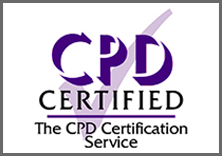- CQF Program
- Events
- Resources »
- Membership
- Careers »
- About Us »
Modeling the dynamics of the Entire Implied Volatility Surface with Deep Learning
Speakers: Daniel Bloch and Arthur Book
CQF Institute is proud to bring you a free online talk with Daniel Bloch and Artur Book on 'Modeling the Dynamics of the Entire Implied Volatility Surface with Deep Learning'.
Event Agenda
17:00 - 17:30 BST - Networking opportunities
17:30 - 18:30 BST - CQF Institute Talk: 'Modeling the Dynamics of the Entire Implied Volatility Surface with Deep Learning'
This event can earn you up to 2 CPD credits.
Abstract
We propose to model the dynamics of the entire implied volatility surface (IVS) multi-step ahead by letting the parameters of a stochastic volatility model with an explicit expression for the smile be dynamically evolved. We assume that these model parameters are stochastic processes driven by some explanatory variables and use deep learning to infer their dynamics. We focus on the SVI model, let each model parameter have a term-structure, and learn to predict the future values of these parameters. We also propose to model the whole IVS by expanding an Affine class of jump-diffusion models. The explanatory variables are the time series of the fitted model parameters and the time series of the forward prices.
To capture the spatiotemporal relations of the IVS, we stack multiple convolutional LSTM (ConvLSTM) layers and form an encoding-forecasting structure, getting a network model capable of understanding the spatiotemporal relationships between strikes and time-to-maturities. However, this model is very sensitive to the term-structure of the model parameters and requires a very fine grid of volatility to converge. Thus, we simplify the model by considering a kernel of size one. The future smiles are reconstructed by using the parametric smile representation, where each parameter is replaced by its estimated value. We can then use the forecasted volatility surface for pricing and hedging options, performing risk analysis, as well as for volatility trading. We explore the performance of our model against a naive strategy by forecasting the volatility surface on the SP 500 option prices several steps ahead, and computing some measures of accuracy. On average, our model systematically outperforms the naive approach at predicting long term forecasts for short to mid-range maturities. This shows that the dynamics of the IVS are dominated by trend and mean reversion, hence predictable.
Contents:
Modeling the volatility surface
Price expansion with the variance swap
The resulting implied volatility surface
Deep learning architecture
The framework
Results
Conclusion
Speaker's Bio
Daniel Bloch is Head of Quantitative Strategies at Blu, a systematic event trading fund using NLP to anticipate large market moves based on news. Prior to working at Blu, Daniel managed teams of quant researchers in top tier banks, developing and implementing option pricing and risk models. He was also a Portfolio Manager on multi-strategies systematic trading across continents, using multifractal analysis and machine learning. Daniel conducts research on mathematical finance and AI, focusing on dynamical models applied to forecasting the stock and option market in order to maximise return and minimise risk.
Arthur Book works as a Derivatives Structurer at a top tier European bank. Before this, Arthur studied and worked with finance and statistics across five countries. Fascinated by the information content of markets and the potential of modern computing and machine learning, Arthur also conducts research in option pricing and AI.




